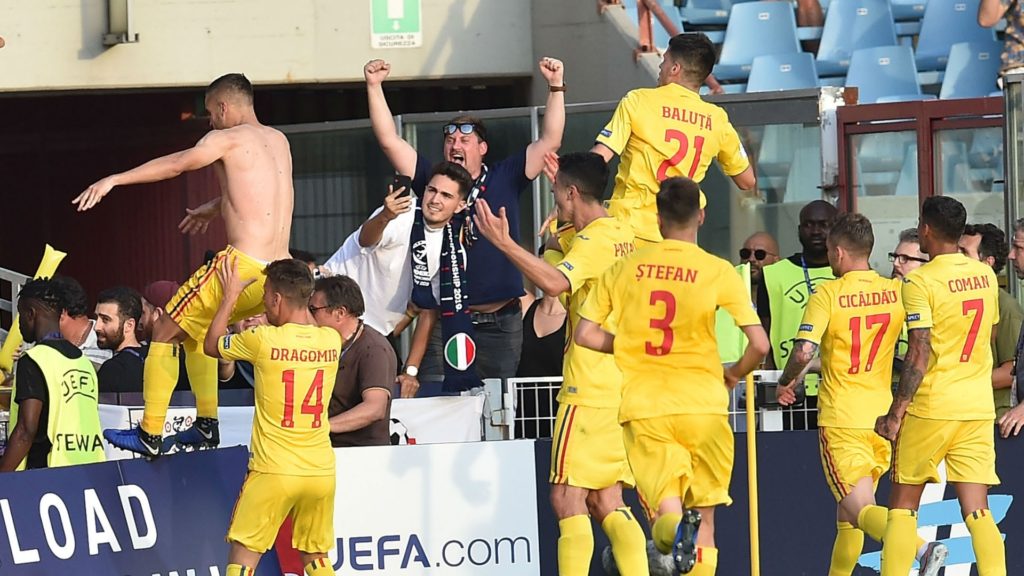Liga 1 is the first tier of Romanian football and, for decades, one of the most important sporting competitions in European countries. With a Federation established at the turn of the century, Romanian football and its domestic league have undergone many changes. Through it all, top footballers and quality teams have managed to climb through the ranks and make a name for themselves. Being one of the most thrilling and exciting leagues in Europe, FootballCoin is proud to include all the matches in Liga 1 among its fantasy football contests.
Just how popular is Liga 1 among Romanian audiences? Recent studies showed that fans have always embraced the competition with great consistency. As of now, it is the second most viewed football event, closely following the Champions League.
Football fandom in Romania remains at an all time high. It has often been said that fans of football clubs tend to be loyal to their favorite teams throughout their lives, with one of the few certainties throughout a lifetime. These fans tend to spend a good deal of time watching their teams, discussing about them and, now especially, making choices for their ultimate fantasy football draft.
How Liga 1 came to be
Throughout the last century, football has been the most popular sport in Romania. The Romanian Football Federation was established way back in 1909. By 1922 the Romanian national team had played its first international match, a win over Yugoslavia.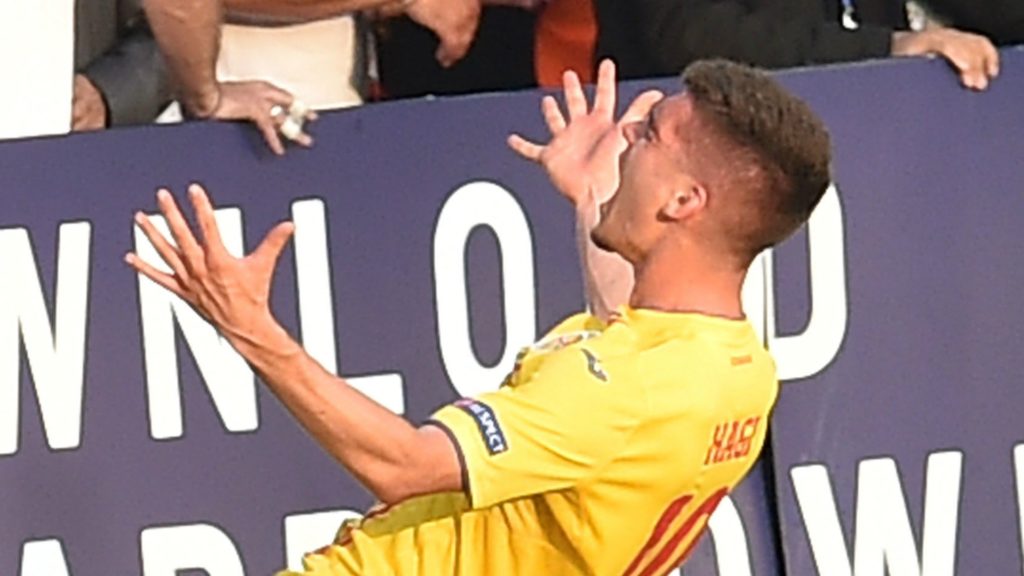
Early champions included teams such as Olympia București, Chinezul Timișoara, Ripensia Timișoara. While these teams failed to retain their winning tradition into the modern age, the majority of the early winners continue to exist as clubs, playing at lower league level.
Beginning with 1922, lower tier leagues were established. The main football league was given the name of Divizia A, a name that eventually changed to the modern branding of Liga 1. The Romanian national team enjoyed some of its best performances during the early 1970s. The team qualified once more for the World Cup, following a lengthy break. It was a notable tournament especially given the achievement of successfully going head to head against former World Cup winners, Brazil and England.
The 1960s also saw the emergence of the clubs that would come to dominate Romanian football for the following decades. Clubs such as Steaua, Dinamo, Rapid (all from Bucharest), as well as Universitatea Craiova or UTA fought to win top honors in Liga 1. Many of these clubs also left their mark on international European competitions.
Gheorghe Hagi and the rise of the Romanian clubs
By the late 1980s, Romanian football was ready to enter the modern football arena. A generation of young players was leading the ranks at both the national team and club level. It should be duly noted that until the 1989 Revolution, Romanian players were forbidden to play for foreign clubs.
Arguably the single biggest achievement for a Liga 1 club came in 1986 when Steaua Bucharest managed to win the Champions Cup (the predecessor for the Champions League) against European behemoths, FC Barcelona.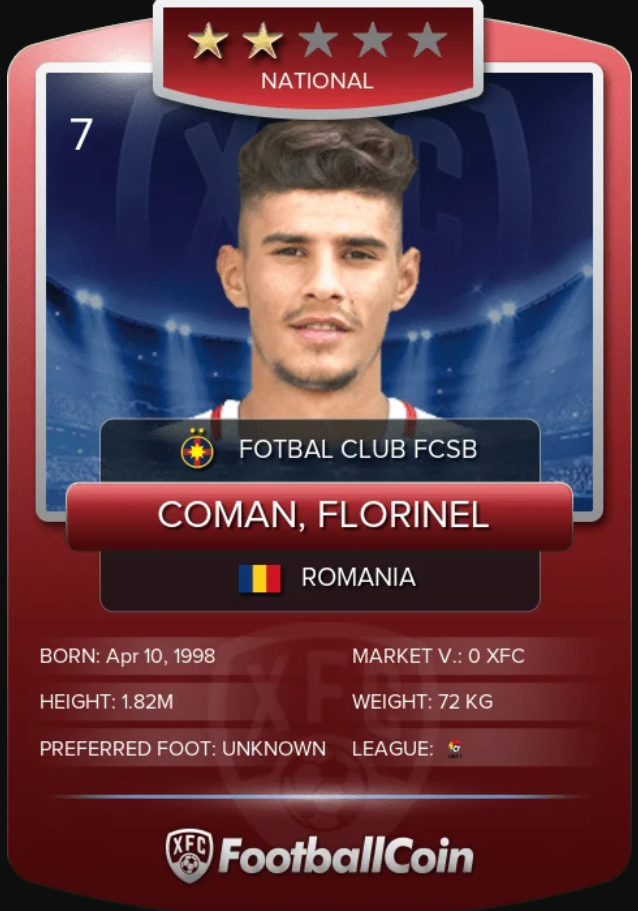
The Romanian national team’s shining moment came in 1994, at the USA hosted World Cup. The team put in a number of memorable performances and were able to reach the Quarter Final stage of the tournament. This remains Romania’s biggest international achievement.
Liga 1 teams and their record in international competitions
Steaua Bucharest’s victory in the Champions Cup is by far the msot important result of any Romanian football club. But, it is far from their only European success. Steaua (known now in Liga 1 and FootballCoin FCSB following a copyright infringement case) went on to win the European Super Cup in 1986 and were Runners Up in the International Cup. Three years later, a slightly altered squad, reached the Champions Cup final again. This time the Romanian side lost to AC Milan.
Dinamo Bucharest was, for many years, Romania’s second most famous football club. Dinamo was also responsible for some European success, reaching the Champions Cup semi-final stage in 1984. In 1990 the club reached the Cup Winner’s Cup semi-final, defeated by Belgium club Anderlecht.
Winners of four domestic titles, Universitatea Craiova were also responsible for producing one of the best European sides of the 1980s. This talented generation of players managed to reach the semi-finals of the UEFA Cup (currently the Europa League) during 1983/84 season and the Quarter-Finals of the Champions Cup during the 1981/82 campaign.
The political changes marked by the 1989 Romanian Revolution spelled an end to the players’ interdiction to play and travel abroad. By the mid 1990s the majority of the players available for the national team were playing for various European clubs.
The first years during the 90s marked a decline in quality for Liga 1. Clubs generally struggled to move past the qualifying stages of European competitions and fewer European clubs showed interest in transferring Romanian players.
By and by, the Liga 1 competition begun regaining its footing. The old derbies once again gripped the public. Newer players were developed with some earning important transfers abroad. And, some of the clubs, most notably Steaua and Rapid Bucharest, registered some considerable success in European competitions.
The current state of Liga 1
Currently, Liga 1 is seen by numerous pundits as one of the most unpredictable and vibrant of all the football competitions across Europe. Internally, the competition remains extremely popular with majority of the country’s population showing, at least, basic knowledge of teams and players active in Liga 1. There are of course also numerous dedicated fans.
While some of the famous traditional clubs have undergone numerous changes in recent years (many are not active in Liga 1 currently), others have risen to take their place. Clubs such as Viitorul, Universitatea Craiova and Poli Iași have emerged as potential forces of Romanian football, focusing on a strategy that encourages youth development.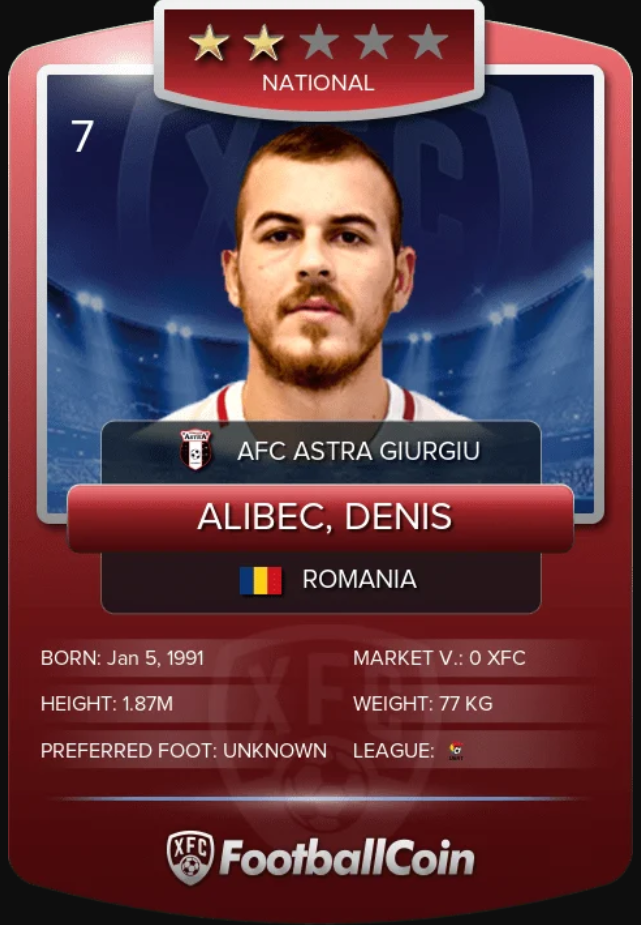
Recent years have also proven very interesting from the perspective of international players joining the ranks of Liga 1. Talented players from countries such as Portugal, Serbia or Brazil have all lent their talents to Romanian football.
With a wide range of interesting players to choose from, the Romanian Liga 1 is one of the football competitions to keep an eye on. FootballCoin is delighted to keep track of all the data arriving from the competition and to include all of its matches among its fantasy football contests.
Fantasy football in Romania. History and potential
Romanian supporters lagged very little behind their European counterparts in demanding proper fantasy football competitions. The first such game appeared in 1997 and was supported by one of the major sports publications in the country. Those interested in playing were required to fill out a form with the names and appropriate codes of the players they wished to choose for their Liga 1 fantasy team.
While the game, its rules and, even, its name changed throughout the years, some of its basic aspects remained the same. Managers were given a budget to start their season with. They were then asked to choose an ultimate Liga 1 draft. Each of the players from Liga 1 was provided a certain numerical value. This was determined based on the football player’s reputation and market value. The final draft could not exceed the budget that had initially been mapped out for the team.
FootballCoin was, in many ways, a continuation of the format, however the game introduced a number of features that it hoped would improve the Liga 1 fantasy football experience. For one thing, FootballCoin is a daily fantasy sports game and users need to choose a new draft for each new week.
Players are no longer represented merely by a numerical value, but rather by collectible player cards as well as by free cards. The collectible cards need to be purchased using FootballCoin’s own cryptocurrency, XFC coin. Once purchased, the user gets to use the card for any of the contests involving the team for which the player is registered.
Speaking of cryptcurrency, FootballCoin also introduced an innovative, yet easy to use system, where all transactions made in the game are registered on FootballCoin’s own blockchain. The blockchain was created using multichain technology.
In games such as FootballCoin, the player’s evolution is closely monitored and marked. Virtual managers are encouraged to create their teams and are then graded based on the overall number of points received by all the members of their fantasy draft.
Choosing your fantasy football team for Liga 1
There are numerous type of strategies that can be employed when attempting to create an ultimate fantasy football team. While all of them can work in different measures, it is clear that managers who have a better understanding of the players involved, of their strengths, weaknesses, past performances etc. have the highest likelihood of winning in fantasy football contests.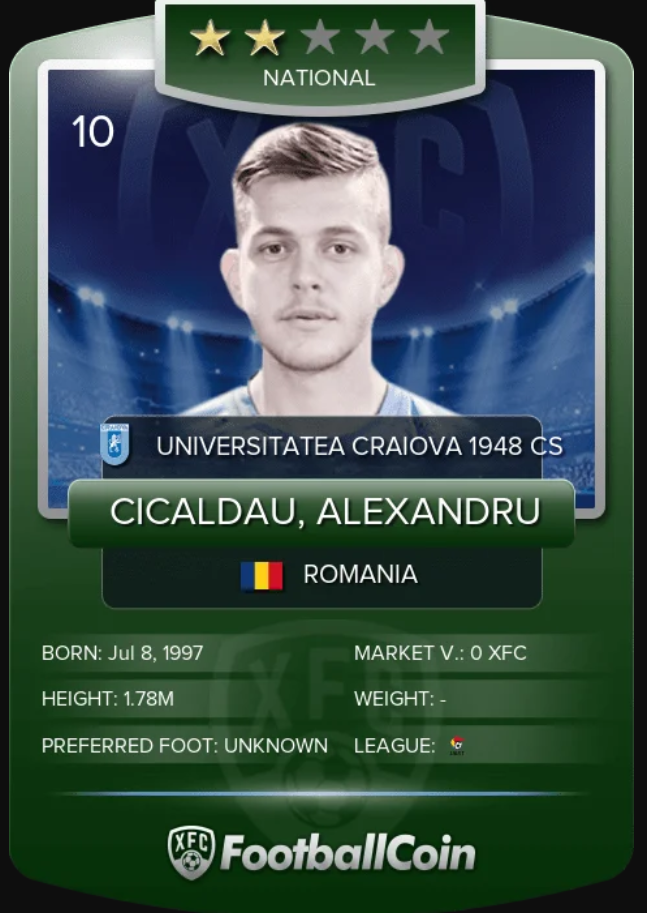
News, scouting tips, player analysis, detailed stats etc. are all available on the FootballCoin website and the managers are requested to get as involved as they can in studying them and making their own decisions.
Daily fantasy football for Liga 1
The very first type of fantasy sports competitions played throughout Europe favored a seasonal approach. This meant that the managers were required to make choices for a squad that would represent them throughout the season. A certain number of changes, provided they didn’t go over budget, could be made from one week to the other. In the beginning stages of fantasy football, making changes was no easy task though with the users having to mail in their choices or phone in to have their changes registered.
FootballCoin is a daily fantasy game. The virtual managers need to make brand new choices for each new contest. Contests usually represent one week of play in a league. Or, contests, may be created so as to include matches from across European leagues.
This means that, for example in Liga 1, managers will need to choose a brand new squad of players for each new fantasy contest involving matches from the Romanian top tier. It is a system that encourages competition as the managers are required to deliver their very best from one week to the other.
Public and private fantasy football contests
The matches from Liga 1 are normally grouped into a fantasy contest created by FootballCoin. The top teams are awarded points and XFC cryptocurrency based on their performances. Prizes are provided by FootballCoin. These are the private contests that may be joined by all managers.
However, users may also create their very own contests. In these cases, the organizers have the option of choosing whichever matches they wish. The organizer may also choose the prize structure, as well as the entry fee that any participant to this private event must pay.
Finally, the managers may decide whether they wish to keep their event to any user willing to pay the entry fee, or whether they want to keep it restricted to a few of their friends. For the latter choice, organizers simply need to provide a password. Their friends will need to use the password upon entering the contest.
Organizing private contests helps not only in terms of bragging rights, but can turn into a profitable endeavor. This is because, automatically, the organizer of the contest receives a percentage of the entire pot that has been collected. The percentage itself is proportional to the ranking of the stadium. Naturally, the contests organized on a 5* stadium, with no restrictions in terms of how many users may join, will receive the highest percentage. The rewards, of course, are provided using FootballCoin’s own cryptocurrency, XFC coin.
FootballCoin, a game built on blockchain, using its own cryptocurrency
Blockchain technology is set, in the eyes of many, to innovate numerous industries. Acting as public ledger, blockchain resolves a number of pressing issues. It is fast, transparent in its exchange of data. And, it can be used successfully in almost all types of industries.
FootballCoin’s goal has been to bring blockchain solutions to the world of fantasy sports. By doing so, fantasy football enthusiasts can be sure that any transaction done in the game is instantly visible. This also helps maintain a high level of security. And, by using their own blockchain, one that has been developed using multichain technology, FootballCoin can ensure that the transactions, such as the trade of player cards, are done practically instantly.
In ensuring that an ecosystem can be built around the concept of FootballCoin, the developers opted to introduce the game’s own crypcocurrency, XFC coin. The coin needs to be used in the game for performing various actions such as entering private contest or purchasing a collectable player card.
While it should be duly noted that most of the player cards and events in the game are free, having access to XFC cryptocurrency offers managers well needed options. The XFC can be earned as a prize for performing well in contests. It can also be traded on the various exchange services that have listed the cryptocurrency.
Properties of XFC
At first glance, one of the main benefits of XFC coin is that is resolves an essential issue with the majority of existing games. While many of these games are very exciting to play, even the best contestants are not presented with a palpable reward for their efforts. What do you win in FootballCoin? The game offers you real rewards in the form of XFC coin. Once won the rewards become the property of the users.
They may choose to use them in the game, store them in the FootballCoin wallet or in the secure game, or trade them as cryptocurrency on the various exchanges. As with the game itself, that offers you numerous ways of playing it, supporters are encouraged to find their best strategy for using XFC coin to benefit them.
There are two main features that make the XFC cryptocurrency a very interesting project in itself. On the one hand, receiving XFC as rewards for performing well in fantasy football contests is certainly an innovative way to resolve the issue with mining the crypto coin. How is XFC different from Bitcoin? XFC shares the majority of features of crypto coins such as Bitcoin or Ethereum.
On the other hand, the XFC is a digital token, one that, essentially, offers the owner a stake in FootballCoin. By participating in contests, purchasing cards, trading XFC on the exchange etc. the users are, basically, having their say on how they believe the game should evolve. In other words, it is the community of users that create the game’s ecosystem and that modify it, naturally, without the intervention of the game’s developers.
Cards and cryptocurrency issued in a limited amount
Lastly, it should be noted that, unlike other games, XFC crptocurrency was issued in a limited amount. This is similar to the concept employed on the original Bitcoin project. This means that no other coins will exist, no other coins can be created by the developer or the users and that the assets must circulate freely throughout the market to help users in achieving their goals.
The same goes for the collectable cards. These were also issued in a limited amount and give a select few the rights to use the cards in any way that they see fit. It remains essential that a manager choosing to invest in a card of Lionel Messi or Cristiano Ronaldo be one of a select few who own the card and thus can use it. Once all of these cards have been distributed it will be up to the FootballCoin community to decide how they prize the cards and how to make use of them.
As opposed to this, the cards ranked below 2*, are not issued on the FootballCoin blockchain and thus are not enetered into the collectible card system that we previously mentioned. Those are not issued in a limited amount and any of the FootballCoin users may choose to use them. In this way, all of the football managers in the game are allowed the chance to use their knowledge and be competitive in fantasy football contests. It also means that the collectors, or the ones who want to be among the select few who are able to use the skill of famous player, are able to do so.
Collectible cards and the human fascination with creating anthologies
It is only natural, as humans, to surround ourselves with the things that remind us of topics that give us the most joy. It is the reason why fans of music will develop a fierce collection of vinyl, CDs or memorabilia. It is the reason why a film buff may wish to own numerous movies or posters.
Besides playing a direct role in any of these activities, or speaking to like-minded people about them, creating collections is the best way that we have to testify to our passion. With so many football fans across the world, it’s no surprise that the football merchandise industry, a by product of the love for football, has been such a success.
The collectible cards, both in physical or digital form, an image that is ingrained in football culture. Whether it is cards, stickers or digital representation of those, fans, young and old, are known to develop a keen interest on owning every single item that makes up a collection.
The FootballCoin collectible cards work in much the same way. On the one hand, these cards serve a practical purpose. The managers can use them inside the game. On the other hand, they tread on our emotions and our love for football, certain teams and players.
And, similarly to a prized collection of baseball cards that the owner takes good care of, the FootballCoin collection can also be kept secure, in mint condition, can be used or gifted. An owner of FootballCoin card can remain the owner of the card for life. The card’s value in the game will never decrease and it will always have a use in the game, as well as outside of it.
The role of the collectible stadium cards
The stadium cards in FootballCoin have many of the same functions that player cards have. Each cards depicts an existing stadium and includes the essential information about the football grounds.
The cards are used inside the game to host fantasy football contests. This means that any event, private or public, is virtually organized on one of the venues. To sync up with the reality of the fact that a larger stadium will host a bigger number of supporters, the FootballCoin stadiums receive a ranking of up to 5*. The number of users that can join each contest depends on that ranking.
Just like the player cards, the stadiums are also divided into free and collectible ones. The free stadiums may be used by any of the game’s users to organize contests that hold up to 11 participants. Organizers may choose all the other details regarding the contest, including entry fee, the matches, the rank of the participants etc.
The collectible stadiums have to be purchased from FootballCoin’s market (or gifted). These stadiums are ranked 3*,4* and 5*. These may hold a larger number of participants, with the few existing 5* not holding any type of restrictions in terms of the number of users that may join the contests.
Similarly to the way the collectible player cards were issued, the stadiums are also issued in a limited amount. This means that if a manager purchases a 5* stadium, only them and very few others may own that card and may organize these type of events.
Furthermore, the owners of stadium cards may be motivated by the fact that they receive a fraction of the entire prize pool for each contest that they organize. This means that depending on how well they promote a contest and how attractive it happens to be for the community, they will receive an XFC reward regardless of whether they take part in the contest.
It’s Easy to play in Liga 1 if you are a Pro
In keeping with the philosophy of giving users choices, FootballCoin includes two type of games named Easy and Pro. While there is nothing effortless about either of those, the difference between the two is the scoring system.
The Easy Mode includes the scoring system variables that are most visible and used in the majority of fantasy football contest. The reduced number of variables refers to goals, assists, goals conceded etc.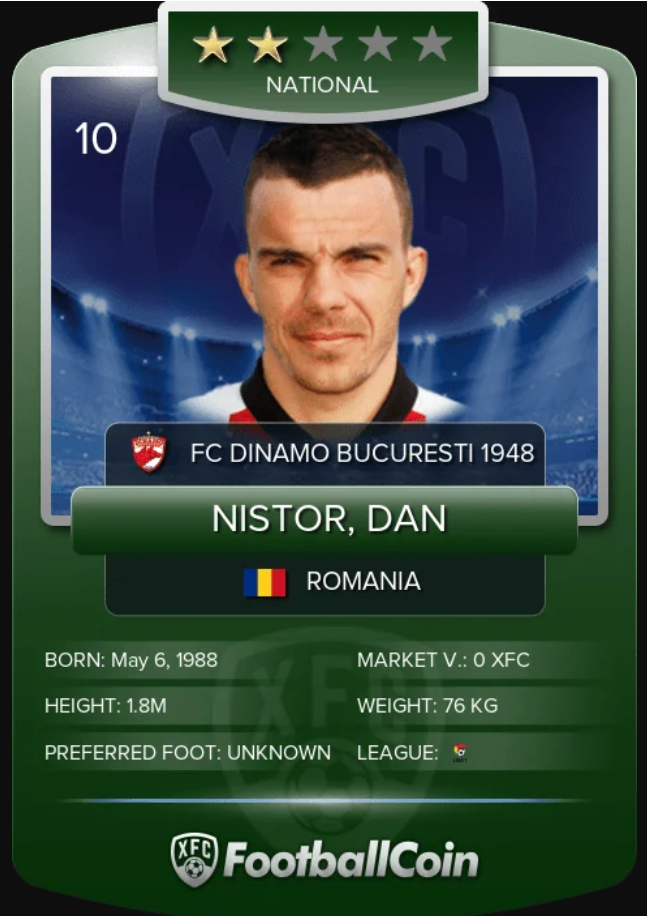
The Romanian Liga 1 is played using the Easy Mode. Fans of the Romanian top tier may choose their ultimate team from all of the players registered to the competition. Based on their playing time, goals, assists, goals conceded etc. the players will receive a mark. The rating of all of the players that comprise the team will then be added up. The Liga 1 virtual football managers will then receive XFC rewards based on how well they have performed through in the fantasy football contest.
Where is the fantasy Liga 1 football heading to in the future?
The stats paint a clear picture about football and fantasy sports in Romania. On the one hand, the popularity of football as a whole shows no signs of decreasing. Liga 1 remains one of the most highly viewed sporting competitions for Romanian fans.
On the other hand, with each passing year, fans show a higher willingness to embrace fantasy sports and other games that allow them the opportunity of living out their fantasy of being a football manager.
The FootballCoin fantasy game looks to resolve all of these needs in a simple and entertaining manner. Fans are treated to an attractive, fully functional, free platform. They are required to use their extensive knowledge of Liga 1 to play the game. The ones that manage to do their best are rewarded. FootballCoin aims to create a vibrant community of fantasy football players.
The game of FootballCoin aims to complete its ultimate goal, that of bridging the gap that exists between fantasy sports and cryptocurrency. Liga 1, one of the most exciting football leagues in Europe, is one component in helping FootballCoin achieve its objective. The project hopes to serve as one example of how blockchain technology and cryptocurrency may be used in a wide array of industries and of how a mass adoption of the two is possible is possible and can serve the best interests of many.
As for fantasy football supporters, we continue to encourage them to make use of their skills and knowledge, create an ultimate team in Liga 1, or in any of the leagues features in the game, act as a real manager and receive rewards for their effort.
